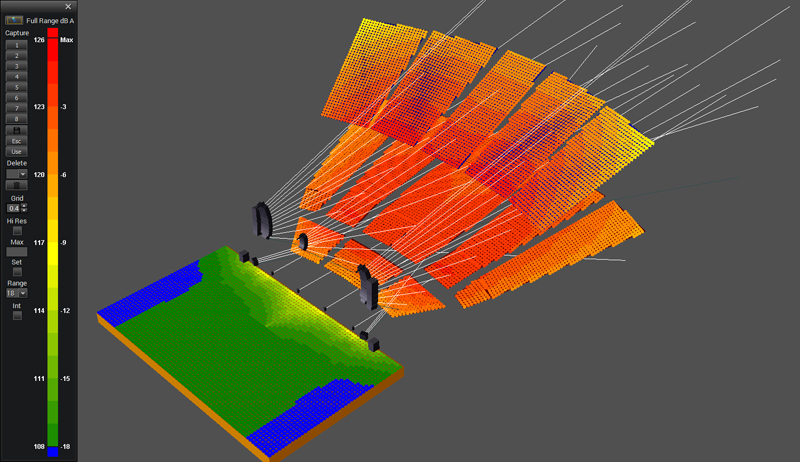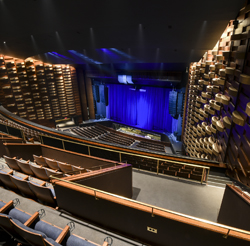Located in the heart of Toronto, the Sony Centre for the Performing Arts has hosted a variety of international attractions and stars since opening its doors as the O’Keefe Centre in 1960, featuring Alexander H. Cohen’s production of the pre-Broadway premiere of Lerner and Loewe’s Camelot starring Richard Burton and Julie Andrews.
Its stage has also hosted a who’s who of music legends such as Louis Armstrong, Duke Ellington, Diana Ross, and Tom Jones.
The mantra of presenting top-shelf live performances has never been stronger, with the Sony Centre recently unveiling new dual-purpose sound reinforcement systems to support a varied and busy schedule that sees upcoming dates by Patti LaBelle, Iggy Pop, and Paul Simon joined by a variety of dance and theatrical productions and other live events.
Currently Canada’s largest soft-seat theatre, the venue was designated a heritage building by the city in 2008, and shortly after, closed for renovations to restore its iconic features as well as upgrade the audience area and lobby.
The advancement of sound reinforcement quality was another top priority, and it’s now been realized. It was a goal shared by senior management, including CEO Mark Hammond and director of operations Matt Farrell, who helped make sure the resources were available to invest in premium equipment.
“The existing system was not designed for a diverse program schedule,” explains Farrell. “It was older and becoming more and more unreliable. Groups began coming through and requesting better coverage and commenting on the quality. We knew it was time to look for a replacement.”

Collaborative Process
Farrell worked closely with head of audio Ross Tuskey in seeking a solution, with an overall goal of dramatically improved sonic quality and coverage combined with touring rider acceptance. Following an extensive review process that included demonstrations of multiple loudspeaker systems and approaches, Adamson Systems emerged as the final choice.
Farrell and Tuskey then collaborated with the design team at Adamson, headed up by applications engineer Jeremiah Karni and director of loudspeaker development Ben Cabot, to finalize the design.
The theatre is a fan-shaped room with seating for 2,000 in the orchestra level and another 1,200 in a single balcony. The décor includes coffered side wall panels of solid cherry paneling, plaster ceilings, fully carpeted floors and padded seating. Tuskey adds that the room has an RT 60 of approximately 1.3 seconds.
“During our discussions it became clear that they needed a system that was very flexible,” Karni notes. “The venue hosts everything from dance companies, symphonies and choirs to touring musicals, concerts and corporate events. We ultimately created two systems that can work separately or together to provide them with the flexibility they require.”
The primary main system incorporates line arrays flown to the left and right of the stage proscenium, each made up of 11 Adamson E15 enclosures with two underhung S10 compact elements to cover the closest seating areas. The full-range arrays are flanked by flown arrays consisting of six Adamson E119 subwoofers.
“We had the opportunity to hear a number of different manufacturers’ products, but the first time we listened to the E15 and S10 boxes, we were sold,” Tuskey states. “As you move laterally across the room, the tonal character and coherence of the sound is extremely smooth. You don’t experience the ever-changing spectrum that so many horn designs create.”
Furthering the system are three ground-stacked S10 elements per side to handle the transitional area beneath the arrays and help with imaging and intensity at the orchestra level, especially for louder shows. In addition to the flown subs, there are two more ground stacked E119s per side to provide a “floor-coupled character” to the lower end of the spectrum.





















